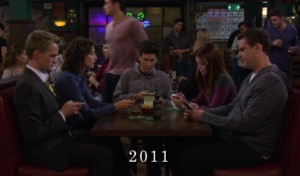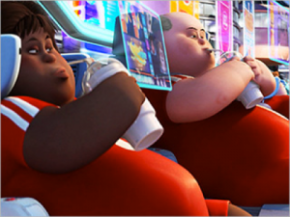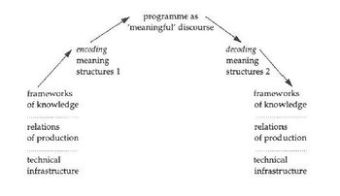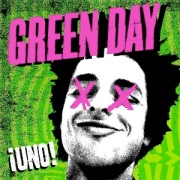I concluded my last entry with a question: Do smart phones make us smarter? By reading my previous blog I would assume that my general animosity toward the trend of the smart phone is conveyed. In this case, it will be elaborated on.
Smart phones not only consume a certain degree of attention and focus, what we like to call multitasking, but they require a certain degree of communication as well. One screen that can do it all. Smart phones, are our best friends. When we are bored on the bus, commuting home, we sit on our phones to fill the time. When a friend excuses themselves from the table at the restaurant, we take out our phones so we don’t look like loners because we are still communicating with someone in some way. Smart phones, are the outlets that we crave in many social situations. It is not only that we have a way to contact people, but we have more ways in which we can be called upon. It doesn’t seem natural to not have a phone.
With this topic in particular I think of an episode of How I Met your Mother. The story narrative begins in 2007 and so offhandedly charts the development of technology. The group sits in their bar debating an actor’s first role or who invented the hamburger (trivial information such as this) and no one really knows for sure but it sparks conversation and even arguments. The scene then flashes forward to 2011 where the group is seated at their usual booth, silent. They are all facing down towards their smartphones, furiously typing. One character, without even raising his head, says, “Remember when we couldn’t figure out who that actor was, or where the hamburger came from…?” He then provides the answer, the rest of the group shrugs in agreement, in a ‘well that settles it’ kind of way and they debate no further. The smart phone has all the answers, the quick and easy answers because it is always there. Ergo, we have all the answers…right?
There is this underlying force that compels to us to always be communicating and in some cases to look like we are always communicating. But for the most part, communication for mobile device users is a constant ebb and flow. Sometimes I leave my phone at home on principle, but I have an unnerving feeling of disconnect throughout the whole day. ‘What if someone is trying to get a hold of me!?’ As I’ve emphasized I don’t have all those applications on my phone, I don’t use it for Twitter or Instagram, but the fact is that these outlets are a staple in most users interactions with their mobile devices. It is a must! Why have a phone if you can’t connect to all other areas of your online social life it “allows for a type of ‘connected presence’ where peers are continually updated as to one another’s situation” (Campbell & Park, 2008). As sarajnewman posts, “Applications on smartphones have become very sophisticated and have made many daily activities much easier.”http://sarajnewman.wordpress.com/2013/01/04/compelled-to-use-mobile-communication.
Though sophisticated as the smart phone is, as I pointed out with the How I Met Your Mother example, I firmly believe that interpersonal communication suffers to some degree. I agree with To Travel to Shop to Eat in that, “This view of communication negatively affects communication as it weakens relationships between people when proper in person conversations cannot be sustained. These communication products may provide people with instant communication but that does not always translate into wholesome relationships.” http://totraveltoshoptoeat.wordpress.com/2013/01/05/hiding-behind-your-cellphonehaving-a-real-conversation/ Where is the spark in face to face interaction if every inquiry, squabble, musing and wondering can be extinguished like a candle in the wind? (Elton John reference intended). We know more, but we learn less.
With smart phones, we have the ability to personalize time and space. We have pretty much perfected the idea of being everywhere at once, straddling the physical and the virtual world(s). But who really needs to stream a show, check emails and facetime your mother simultaneously? Sure, its nice that technology has this potential, but I don’t think it necessarily means its useful. As Zambonelli puts it, this truly is a superorganism. A living, breathing thing that is all consuming. It IS our everyday lives because hyper communication is becoming the only way in which change/action takes place. Something like the KONY 2012 campaign comes to mind.
It is true that there is this overwhelming need to communicate, to be connected. It’s not that it is a bad thing, but I feel like we as users don’t really know how to balance the compulsion with the authenticity of actual communication. In retrospect these methods of communication are still so new to us that we don’t even really know how to use them in a way just like Walker states, “Principle among them is that many of the ways in which the iPhone’s functionality connects to what people want to do, in other words what it actually does, its behaviour, remain as yet undiscovered by users.” For instance, I didn’t reply to a text, instead I tweeted my friend back a couple days later and for some reason this angered her and I couldn’t figure out why. What does it matter how I respond? It is assumed that because we always have our phones, our interactions will be instantaneous. For this reason I agree with Christansblog91 in that, ” My relationship with these mobile devices feels very two sided. On one side I love the ability to be in contact with anyone. You can communicate any form of information or media with anyone on the fly. But on the other, being available for constant contact does feel to be a chore at times.” http://christiansblog91.wordpress.com/. For some reason, I don’t want to be too attached to my smart phone, because in truth, I don’t want to be so available to others.
I do go back and forth about this topic because I can’t sit here on some high horse and claim that I don’t need or want a phone, because just like everyone else, I would be at a loss without it. But I’ve attempted to emphasize the fact that ‘smartphones’ do not always add to communication in the ways we like to think. And moreso, they do not make the self any better either. It is just an issue of transitioning into the way communication has changed without loosing the essence of communication itself.



 (HitRecord homepage. Launched by Joesph Gordon Levitt in 2010. Learn more at
(HitRecord homepage. Launched by Joesph Gordon Levitt in 2010. Learn more at 
